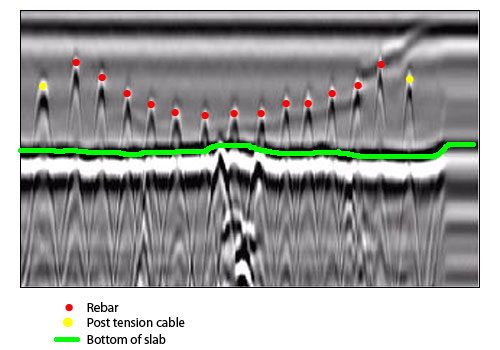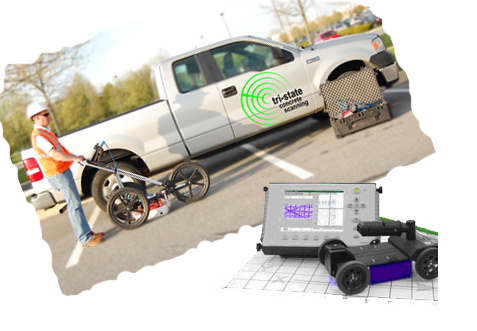Concrete Scanning: An Essential Step Towards Guaranteeing Structural Honesty and Security
In the realm of building and facilities upkeep, the value of concrete scanning can not be overemphasized. This careful process holds the vital to unveiling prospective risks hidden beneath the surface of seemingly solid structures. By utilizing advanced innovation and methods, concrete scanning offers as a crucial device in making sure that the integrity and safety and security of buildings and bridges are supported to the greatest standards. Nonetheless, beyond its surface-level implications, the function of concrete scanning expands far much deeper than fulfills the eye.
Relevance of Concrete Scanning
Concrete scanning plays a critical function in ensuring the architectural integrity and security of buildings and infrastructure jobs. By using sophisticated technologies such as ground-penetrating radar (GPR) and electromagnetic induction, professionals can non-destructively inspect concrete structures to spot possible flaws, spaces, embedded things, and support format. This procedure makes it possible for early detection of anomalies that could compromise the security of a framework, avoiding pricey damages and guaranteeing the security of residents.
Prior to boring, reducing, or coring right into concrete, scanning assists identify the exact places of rebar, post-tension cords, and other ingrained components, decreasing the danger of accidental hits that might lead to structural weak points. Additionally, concrete scanning aids in quality control by verifying the thickness of concrete covers and detecting any type of inconsistencies that may influence the overall durability of the structure.
Modern Technology for Concrete Evaluation

Advantages of Very Early Detection
Timely discovery of structural problems can considerably alleviate threats and ensure the longevity of building jobs. By recognizing possible problems early on in the construction process, stakeholders can take proactive actions to deal with concerns before they intensify into larger and extra pricey troubles. Among the vital advantages of early detection is the prevention of structural failings, which can pose severe safety threats and cause task delays and monetary losses.
Moreover, early detection allows for timely fixings and upkeep, which can aid expand the lifespan of the structure. By addressing concerns without delay, building and construction teams can avoid expensive repair services and even the requirement for early substitute of structural elements. This proactive technique not only saves time and money however also improves the overall safety and security and resilience of the building and construction project.
Furthermore, very early discovery can boost task planning and decision-making by supplying stakeholders with important understandings right into the condition of the framework. Armed with this details, task supervisors can make enlightened selections regarding building timelines, products, and approaches, causing much more successful and effective job end results.
Making Certain Structural Stability
Making certain the structural stability of a construction task is extremely important to its safety and security and long life. Structural stability describes the capacity of a building or facilities to maintain its form and function under numerous lots and environmental problems. To accomplish this, detailed analysis and surveillance of the framework are vital. Concrete scanning plays a crucial role in making certain structural security by identifying possible concerns such as gaps, delamination, or reinforcement rust that can compromise the stability of the structure in time.
By utilizing advanced scanning innovations like ground-penetrating radar (GPR) and electromagnetic induction, building and construction specialists can non-invasively evaluate concrete frameworks to determine locations of concern beneath the surface. This proactive strategy permits the very early detection of issues or weak points, making it possible for prompt fixings or support to avoid structural failings.
Routine concrete scanning throughout various construction phases and throughout the life process of a framework can help maintain its stability, mitigate threats, and guarantee the security of owners. By focusing on structural security with concrete scanning, construction jobs important site can enhance their durability and toughness, eventually adding to better safety and long life.

Preventing Essential Failings
Carrying out regular examinations, such as concrete scanning, can expose covert issues like gaps, fractures, or deterioration that can endanger the integrity of a structure. By utilizing innovative scanning technologies like Ground Passing through Radar (GPR) or Concrete X-ray, engineers can non-destructively examine the problem of concrete and identify weak points that require reinforcement or repair work.

Conclusion
In verdict, concrete scanning plays a critical role in making certain structural integrity and safety and security by making use of sophisticated modern technology for early check that discovery of prospective problems. This positive approach aids stop critical failings and makes certain the security of structures. It is important to prioritize concrete evaluation as a common technique to safeguard the long life and security of structures and framework.
Concrete scanning plays an essential role in making sure the structural stability and security of buildings and facilities projects. Additionally, concrete scanning help in top quality control by verifying the density of concrete covers and finding any type of discrepancies that may influence the overall sturdiness of the framework. Concrete scanning plays an essential role in making sure architectural security by finding possible concerns such as gaps, delamination, or support corrosion that can endanger the honesty of the framework over time.

In final thought, concrete scanning plays a crucial function in making sure structural stability and security by utilizing innovative modern technology for very early discovery of prospective visit site issues.